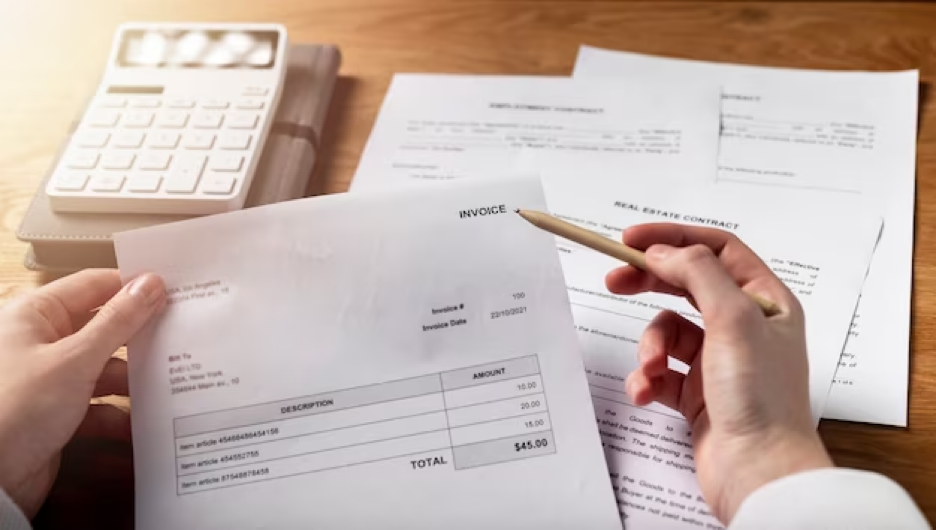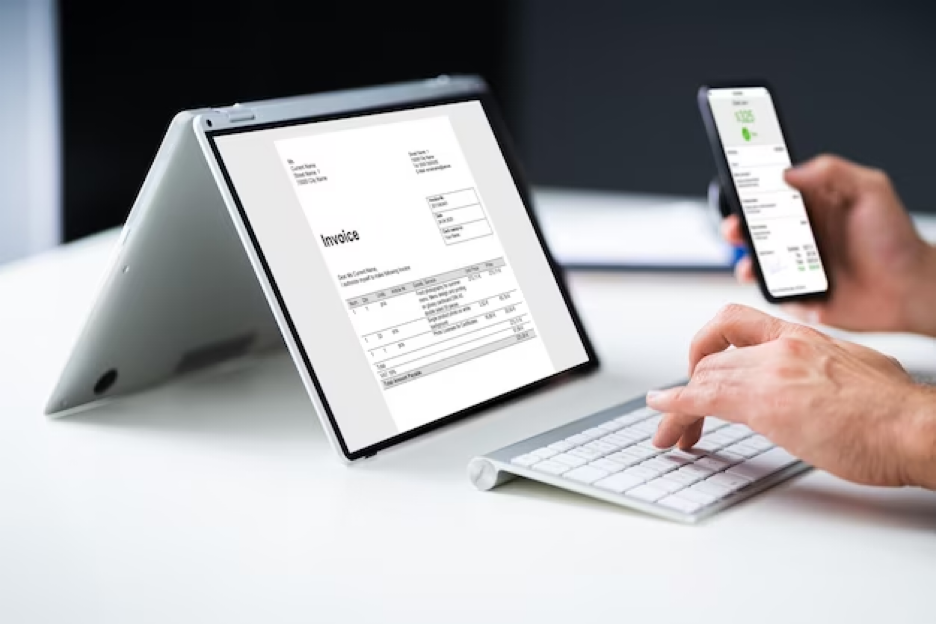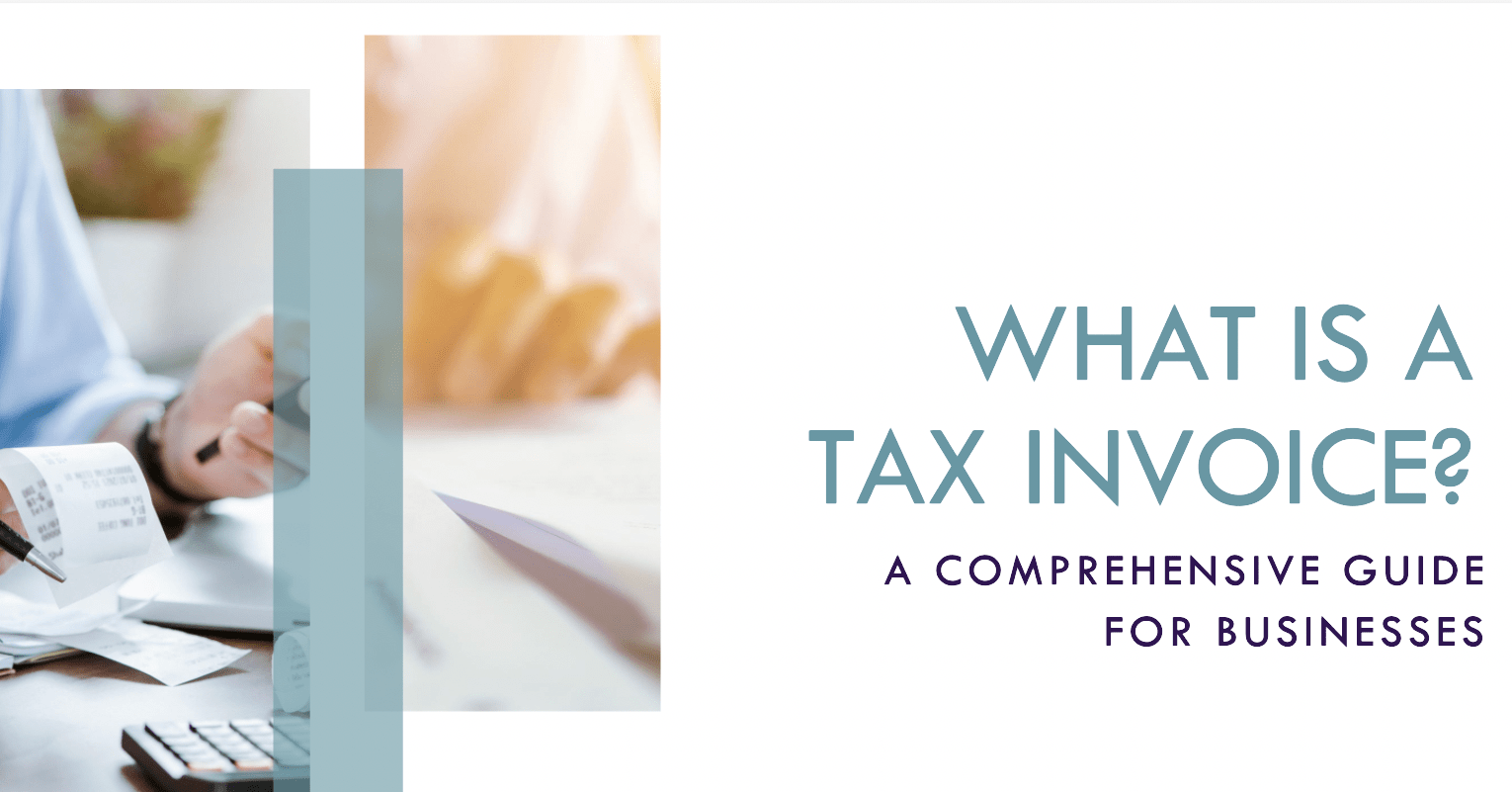Understanding the ins and outs of tax invoices is crucial for businesses of all sizes. As a business owner or entrepreneur, you may have encountered the term “tax invoice” but wondered about its significance and how it impacts your financial operations.
In this comprehensive guide, we will provide a clear and concise explanation of tax invoices, their purpose, and why they are essential for your business. From the basics to the nitty-gritty details, we’ll equip you with the knowledge you need to navigate the world of tax invoices with confidence and ensure compliance with tax regulations.
Let’s get started!
What is a Tax Invoice?

So, picture this: you’re running a business, and you’ve just sold some goods or services to another business or customer. A tax invoice is the official piece of paper (or digital document) that you send to a business or customer, confirming the sale and showing all the important details.
Now, why is this little piece of paper so important? Well, think of it as evidence. It proves that a transaction took place between you and the buyer. And you know what? Tax authorities love evidence. They want to make sure everyone is paying their fair share of taxes, and tax invoices play a crucial role in that.
In the United Arab Emirates (UAE), tax audits are conducted by the Federal Tax Authority (FTA). The FTA is the regulatory body responsible for administering and enforcing tax laws and regulations in the UAE.
The FTA has the authority to conduct audits to ensure compliance with tax laws and regulations. During an audit, the FTA may review a taxpayer’s financial records, including tax invoices, to verify the accuracy of reported tax information and assess whether the taxpayer has fulfilled their tax obligations.
UAE businesses must maintain proper records and documentation, including tax invoices, to facilitate the audit process.
Importance of Tax Invoices

Tax invoices may not be the most exciting topic, but let me tell you, they’re super important for businesses. Here’s why:
- Compliance: Tax invoices are your trusty sidekicks when it comes to showing that your business is playing by the tax rules. They’re crucial documentation that proves you’re on top of your tax reporting game and meeting all your legal obligations.
- Input Tax Credit: Here’s where tax invoices can save the day and put some extra cashback in your pocket. With valid tax invoices, you can claim input tax credits. That means you get to reduce your overall tax liability. Who doesn’t love saving money, right?
- Audit Trail: Think of tax invoices as a breadcrumb trail that helps you track and verify your transactions. When those tax inspections or audits come knocking, having well-organized tax invoices makes it a breeze to show that you’ve got everything in order.
- Dispute Resolution: Sometimes, things don’t go as smoothly as we’d like. That’s where tax invoices come to the rescue. They’re your solid evidence of the terms and conditions of a transaction. If a dispute or discrepancy arises, you can whip out your trusty tax invoice and say, “Look, here’s what we agreed on!”
- Financial Records: Tax invoices are like the backbone of your financial records. They keep everything in order, from budgeting and forecasting to financial analysis. With accurate and organised tax invoices, you’ve got a clear picture of your business’s financial health.
So, tax invoices may not be the most glamorous part of running a business, but they sure pack a punch. They keep you compliant, save you money through input tax credits, provide an audit trail, help resolve disputes, and keep your financial records in tip-top shape. Keep those tax invoices in order, and you’ll be rocking your business finances like a pro!
Mandatory Components of a Tax Invoice

Now, let’s dive into the important components that make up a tax invoice. These components may vary slightly depending on where you’re located, but here are the common ones you should know about:
Seller’s Details in Tax Invoice
This is all about you, the seller. Your tax invoice should clearly state your business’s name, address, and tax identification number. This information helps identify who’s responsible for issuing the invoice and who the buyer is dealing with.
Buyer’s Details in Tax Invoice
Just as you need to include your own details, you also need to provide the buyer’s information. This includes their name, address, and, if applicable, their tax identification number. Including the buyer’s details helps ensure accurate records and facilitates communication between parties.
Invoice Number in Tax Invoice
Every tax invoice needs a unique identification number. Think of it as a special code that sets your invoice apart from the rest. This number is crucial for reference purposes and makes it easier to track and organise your invoices.
Plus, if you ever need to retrieve a specific invoice down the line, you can quickly locate it using the invoice number.
Invoice Date
The invoice date is simply the date when you issue the tax invoice. It signifies the official moment when the transaction took place. It’s important to include this date to keep your financial records organised and to establish a timeline for when the goods or services were provided.
Description of Goods or Services
Now, here’s where you get to describe what you’re selling. Be clear and specific about the goods or services you provided in the transaction. You want to avoid any confusion or misunderstandings, so make sure to include enough details to accurately represent what was bought or sold.
Quantity and Unit Price
This part is all about the nitty-gritty of the transaction. You need to specify the quantity of goods or services supplied and the corresponding unit price. This information helps calculate the total owed amount and provides transparency for both parties.
Total Amount in Tax Invoice
This is the amount that the buyer is expected to pay. It includes the cost of the goods or services, any applicable taxes, and any other charges or fees. Make sure to calculate this accurately, as it’s the bottom line that the buyer will focus on.
Tax Details
Now, let’s talk about taxes. Depending on your jurisdiction, there may be specific taxes that need to be accounted for in your tax invoice. Common examples include value-added tax (VAT) or goods and services tax (GST). Clearly state the tax amount charged and any relevant tax rates to ensure transparency and compliance.
Payment Terms in Tax Invoice
This component outlines the payment terms and conditions. It includes the payment due date and any other important details related to how and when the buyer should settle their payment. This helps avoid any confusion or delays in receiving payment.
Terms and Conditions
Last but not least, the terms and conditions. This section covers any additional agreements or conditions related to the transaction. It could include things like warranties, return policies, or specific terms of service. Including this information helps establish clear expectations and protects both parties involved.
These days, you don’t necessarily need a stack of paper to whip out a tax invoice. Nope, we’ve gone digital, folks!
Electronic Tax Invoices

These days, you don’t necessarily need a stack of paper to whip out a tax invoice. Nope, we’ve gone digital, folks!
Electronic tax invoices are the cool and futuristic version of their paper counterparts. Instead of printing them out on good old paper, these are created, issued, and stored electronically. And let me tell you, they come with some pretty sweet perks.
First off, convenience is the name of the game. With electronic tax invoices, you can say goodbye to rummaging through stacks of paper or worrying about misplacing that one crucial invoice. Everything is neatly organised in digital format, making it a breeze to search, retrieve, and send invoices with just a few clicks. And let’s remember the trees we’re saving in the process!
Cost savings are another big advantage of going electronic. Think about it—no more spending money on paper, ink, and other pesky printer maintenance costs. Plus, you won’t need to physically mail out invoices, which means no more postage fees. It’s like a little financial boost for your business.
But wait, there’s more! Electronic tax invoices also bring enhanced efficiency to the table. With the power of automation and digital systems, you can streamline your invoicing process. Everything can be done faster and with fewer manual errors, from generating invoices to tracking payments. It’s like having a personal assistant who handles all the nitty-gritty invoicing tasks for you.
Now, before you go all digital-crazy, it’s essential to remember that tax authorities still have a say in how electronic tax invoices are handled. You need to follow specific requirements and guidelines to ensure the validity and authenticity of your electronic invoices. So, make sure you do your homework and comply with the regulations set by the tax authorities in your jurisdiction. This could include using specific taxation software or following certain formatting standards to ensure your electronic tax invoices are legit.
Retention and Record-Keeping

As a business owner, you’re generally required to hang on to your tax invoices for a specific period of time. How long, you ask? Well, it depends on where you’re located. Different jurisdictions have different rules and regulations in place. Some might say you need to keep those invoices for a couple of years, while others might require you to hold onto them for a bit longer.
Now, why is record-keeping so important? Well, it’s all about tax compliance, audits, and the good old resolution of disputes. Regarding taxes, you want to be squeaky clean and on the right side of the law. By keeping proper records of your tax invoices, you have the evidence you need to back up your financial transactions.
And let’s remember audits. (Cue dramatic music). Yeah, nobody likes them, but they happen. Tax authorities have the power to swoop in and take a closer look at your financial records. But if you’ve got your tax invoices neatly organised and stored, you’ll be well-prepared to face the auditors.
Tips when Making Your Tax Invoice
When it comes to writing tax invoices, it’s important to ensure accuracy, clarity, and compliance with tax regulations. Here are some tips to help you write effective and compliant tax invoices:
- Make sure to include all the necessary components we discussed earlier, such as your business details, buyer’s details, invoice number, invoice date, description of goods or services, quantity, unit price, total amount, tax details, payment terms, and any relevant terms and conditions.
- Keep your language simple and easy to understand. Avoid using jargon or overly technical terms that may confuse the recipient of the invoice.
- Take the time to double-check all calculations, including quantities, unit prices, and tax amounts. Mistakes in calculations can lead to incorrect payment amounts and potential disputes.
- Maintain consistency in your formatting throughout the invoice. Use a clear and legible font, ensure proper alignment of information, and organise the invoice in a logical manner.
- Specify the payment due date and any other relevant payment terms, such as accepted payment methods or late payment penalties.
- Include any necessary legal or compliance statements. For example, in some countries, you may need to include a statement that the goods or services are subject to value-added tax (VAT). Be aware of any legal requirements and ensure you include the appropriate statements.
- Keep a copy of each tax invoice you issue for your own records.
- If you’re unsure about any specific tax regulations or requirements, it’s always a good idea to consult with a tax professional or accountant.
Wrapping Up
Tax invoices are an integral part of a business’s financial operations and tax compliance. They provide a formal record of transactions, aid in tax reporting and calculation, and contribute to the overall transparency and efficiency of financial systems.
By understanding the purpose, components, and importance of tax invoices, businesses can ensure compliance, streamline their financial processes, and maintain accurate records for future reference.


